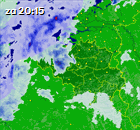Tailend Another QSO………. A third major way to find someone to talk with on the ham bands is tailending. To tailend a conversation is to wait until another contact is completed, and then call the participant you want to talk with. This may work about half the time. Not uncommonly you will get no answer. The station you call is probably not expecting a call, they may have already turned off their radio, or may simply have something else to do. But sometimes tailending works. As you scan across the band looking for CQs or for a clear frequency on which to call your own CQ, you may hear an interesting conversation that you wish to contribute to, or you may hear a ham friend you want to say hello to.
The polite way to tailend another QSO is wait until the other stations are completely finished. This is easy to determine if you are able to hear both of the stations talking. But sometimes due to radio conditions you will hear just one of the stations. For example, you hear the end of a QSO between N1ABC and F2DEF. You would like to work N1ABC and are unable to hear F2DEF. When you hear the first station send something like, "HOPE TO CUAGN 73 F2DEF de N1ABC TU K", wait. Wait a minute or two until the first station N1ABC acknowledges F2DEF's last transmission, perhaps by sending a final "73" or a "dit-dit". If instead you call N1ABC as soon as you heard them sign, "de N1ABC TU K", you may well be transmitting at the same time and on the same frequency as F2DEF, who N1ABC is trying to listen to. This is a good way to make N1ABC dislike you and decide not to answer you. This polite advice does not generally apply to tailending a rare DX station. Calling and working rare DX stations is usually a mean and cut throat procedure. Another reason I much prefer friendly domestic CW QSOs over fighting for rare DX.
At times you may be waiting to tailend a ham QSO, when the station you would like to talk to ends their last transmission with a "CL" for "closing" or "clear". This indicates that person is signing off and leaving the air, turning off their rig, and will accept no other calls. If you call the CLing station anyway, they may still reply out of politeness, but they are probably anxious to leave. If you just have to talk with them, don't keep them too long.
The polite way to tailend another QSO is wait until the other stations are completely finished. This is easy to determine if you are able to hear both of the stations talking. But sometimes due to radio conditions you will hear just one of the stations. For example, you hear the end of a QSO between N1ABC and F2DEF. You would like to work N1ABC and are unable to hear F2DEF. When you hear the first station send something like, "HOPE TO CUAGN 73 F2DEF de N1ABC TU K", wait. Wait a minute or two until the first station N1ABC acknowledges F2DEF's last transmission, perhaps by sending a final "73" or a "dit-dit". If instead you call N1ABC as soon as you heard them sign, "de N1ABC TU K", you may well be transmitting at the same time and on the same frequency as F2DEF, who N1ABC is trying to listen to. This is a good way to make N1ABC dislike you and decide not to answer you. This polite advice does not generally apply to tailending a rare DX station. Calling and working rare DX stations is usually a mean and cut throat procedure. Another reason I much prefer friendly domestic CW QSOs over fighting for rare DX.
At times you may be waiting to tailend a ham QSO, when the station you would like to talk to ends their last transmission with a "CL" for "closing" or "clear". This indicates that person is signing off and leaving the air, turning off their rig, and will accept no other calls. If you call the CLing station anyway, they may still reply out of politeness, but they are probably anxious to leave. If you just have to talk with them, don't keep them too long.




0 reacties:
Een reactie posten